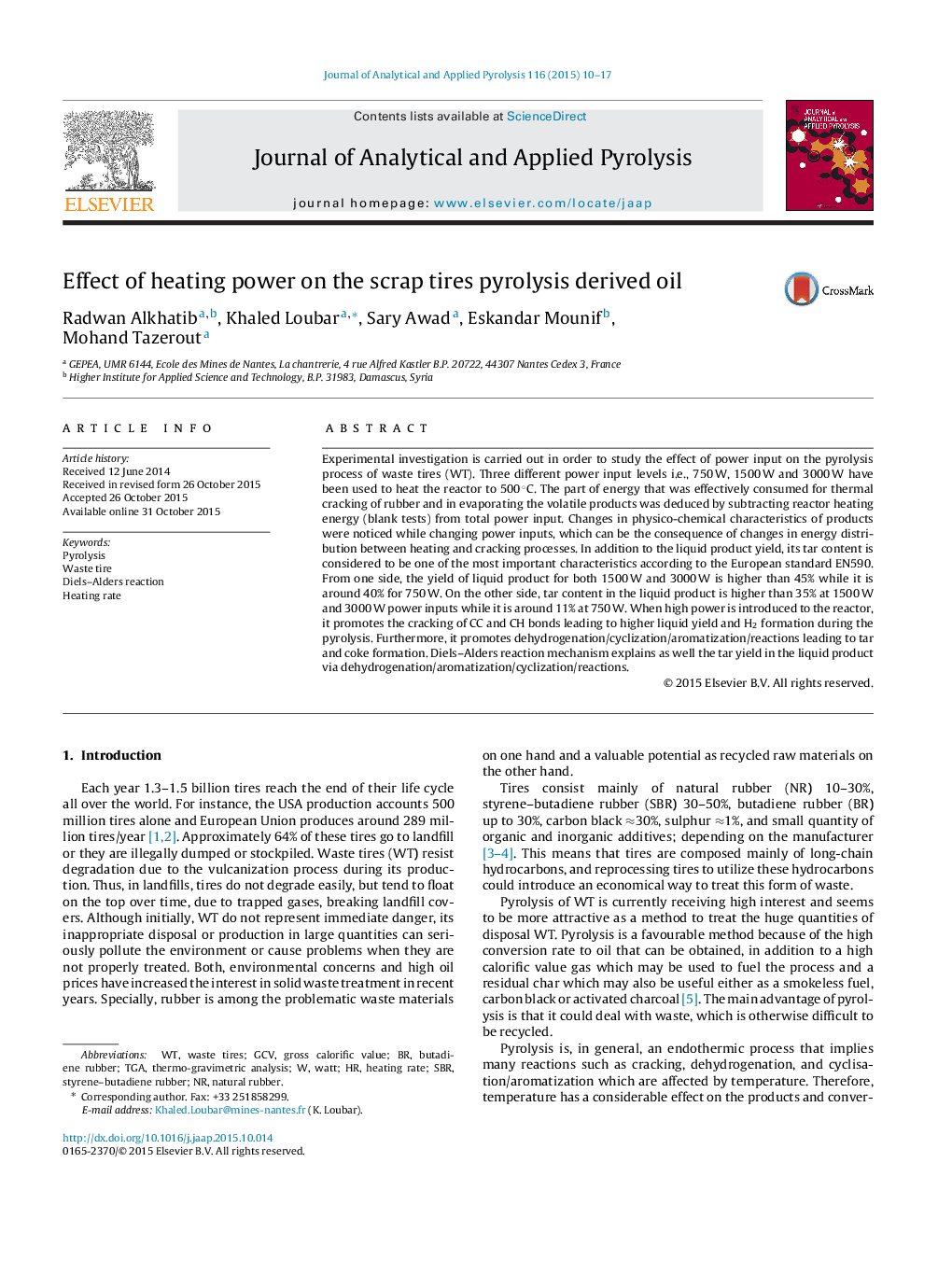| کد مقاله | کد نشریه | سال انتشار | مقاله انگلیسی | نسخه تمام متن |
|---|---|---|---|---|
| 1196996 | 1492961 | 2015 | 8 صفحه PDF | دانلود رایگان |
• Experimental investigation of the effect of power input on the pyrolysis of waste tires.
• changing power inputs affects physico-chemical characteristics of produced oil.
• tar content is about 35% at high power input (3000 W) while it is 11% at 750 W.
• high power promotes the cracking of CC and CH bonds leading to higher liquid yield.
Experimental investigation is carried out in order to study the effect of power input on the pyrolysis process of waste tires (WT). Three different power input levels i.e., 750 W, 1500 W and 3000 W have been used to heat the reactor to 500 °C. The part of energy that was effectively consumed for thermal cracking of rubber and in evaporating the volatile products was deduced by subtracting reactor heating energy (blank tests) from total power input. Changes in physico-chemical characteristics of products were noticed while changing power inputs, which can be the consequence of changes in energy distribution between heating and cracking processes. In addition to the liquid product yield, its tar content is considered to be one of the most important characteristics according to the European standard EN590. From one side, the yield of liquid product for both 1500 W and 3000 W is higher than 45% while it is around 40% for 750 W. On the other side, tar content in the liquid product is higher than 35% at 1500 W and 3000 W power inputs while it is around 11% at 750 W. When high power is introduced to the reactor, it promotes the cracking of CC and CH bonds leading to higher liquid yield and H2 formation during the pyrolysis. Furthermore, it promotes dehydrogenation/cyclization/aromatization/reactions leading to tar and coke formation. Diels–Alders reaction mechanism explains as well the tar yield in the liquid product via dehydrogenation/aromatization/cyclization/reactions.
Journal: Journal of Analytical and Applied Pyrolysis - Volume 116, November 2015, Pages 10–17
